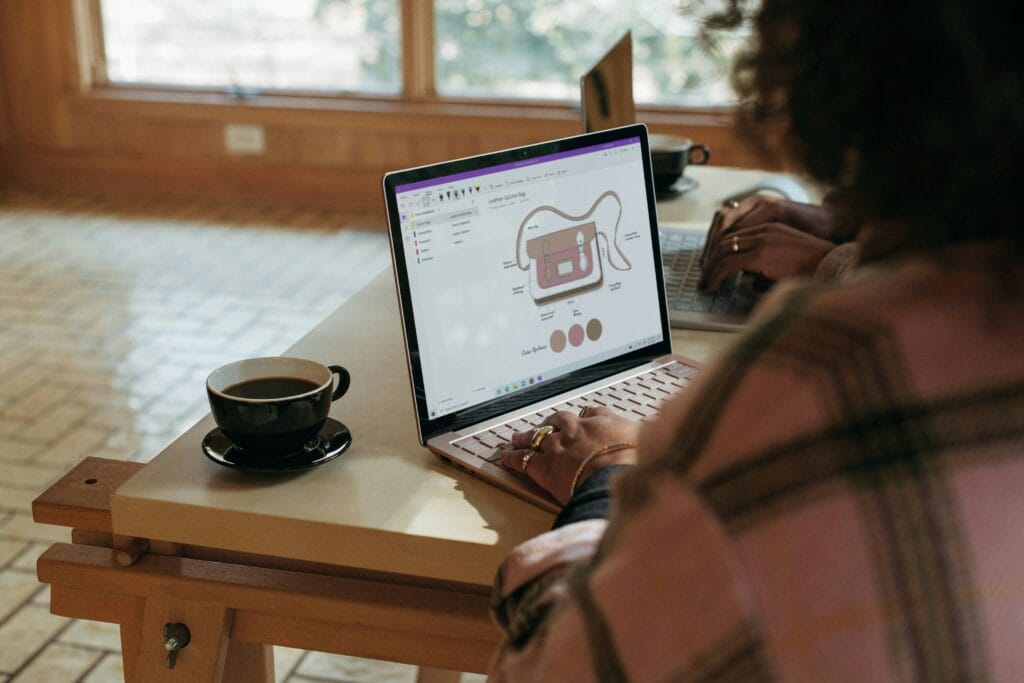You’ve spent thousands on Facebook ads. Your Google Shopping campaigns are humming. Traffic during Q4 is up 200%. And yet, you’re watching potential customers load up their carts and vanish like they just remembered they left the stove on.
Here’s the thing nobody wants to talk about: during peak season, you’re not really losing customers. You’re hemorrhaging money.
The average eCommerce store sees cart abandonment rates spike from around 70% to 85% during Q4. Sounds like just another depressing stat, right? But let me put it differently. If you’re driving 10,000 visitors a day during Black Friday week, and 3,000 of them add items to cart, that 85% abandonment rate means 2,550 people just walked away. With an average cart value of $120, that’s $306,000 in potential revenue. Per day. Gone.
And most stores? They shrug and say “that’s just how it is during the holidays.”
But here’s what I’ve learned after helping dozens of eCommerce brands through multiple peak seasons: cart abandonment recovery isn’t a nice-to-have during Q4. It’s the fastest path to $50K+ in found money that you’ve already paid to acquire. You don’t need more traffic. You need to stop letting the traffic you have slip through your fingers.
The good news? Unlike paid acquisition, holiday shopping cart optimization has a clear playbook, measurable ROI, and can be implemented in days, not months. Let’s talk about how much you’re actually losing, and more importantly, how to get it back.
The Hidden Revenue Crisis: What Cart Abandonment Actually Costs You During Q4
Picture this: You’re running a mid-sized online store, and Black Friday week hits. You’re pumped because you’re driving 50,000 visitors to your site. Traffic is crushing it. But here’s the gut punch. With an 80% abandonment rate and a $150 average cart value, you’re watching $600,000 in potential revenue just evaporate. Gone. That’s not a hypothetical nightmare, that’s actually happening to stores right now.

Let me break down the math so you can see what’s really happening in your own store. The formula is pretty straightforward:
Total Abandoned Cart Value = Traffic × Add-to-Cart Rate × Average Cart Value × Abandonment Rate
So if you’re getting 50,000 visitors, let’s say 20% add something to their cart (that’s 10,000 carts), with a $150 average value, and 80% abandon? You’re looking at 8,000 abandoned carts worth $1.2 million total. Yeah, you read that right.
The Recovery Reality Check
Now, you can’t recover all of it. That’d be magic. But here’s where cart abandonment recovery gets interesting. Industry data shows you can typically recover 10-30% of that abandoned value with a solid abandoned cart strategy. Even at the low end, that’s $120,000 in recoverable revenue just sitting there.
Recoverable Revenue = Total Abandoned Value × Recovery Rate (10-30%)
When HappyFlops redesigned their checkout optimization flow, they didn’t just tweak button colors. They tackled the real friction points and saw their conversion rate jump to 12.5%. That kind of improvement during Q4? It’s the difference between a good quarter and a record-breaking one.
Why Q4 Makes Everything Worse
Here’s what really stings. Research from Baymard Institute shows the baseline cart abandonment rate sits around 70% most of the year. Not great, but manageable. During Q4? That spikes to 80-85%. The problem gets exponentially worse precisely when your revenue opportunities are at their peak.
Think about it. You’re spending more on ads to drive that 2-3x traffic increase. Your team’s working overtime. Your inventory’s maxed out. And then 85 out of every 100 people who add something to their cart just… leave. That’s brutal.
Calculate Your Own Losses
Want to see what this looks like for your store? Grab your analytics and plug in these numbers:
- Weekly Q4 Traffic: [Your number]
- Add-to-Cart Rate: [Usually 10-25%]
- Average Cart Value: [Check your Shopify/platform data]
- Current Abandonment Rate: [Typically 75-85% in Q4]
Multiply those together and you’ll see your total abandoned cart value. Then multiply that by 0.15 (a conservative 15% recovery rate) to see what you could realistically bring back with better holiday shopping cart optimization.
According to 2024 cart abandonment data, 47% of shoppers bail because of unexpected costs at checkout. Another 25% leave because you’re forcing them to create an account. These aren’t mysterious problems. They’re fixable friction points that are costing you real money. Understanding why your shoppers leave before buying can help you identify exactly where the friction occurs in your checkout flow.
The kicker? Most stores know they have an abandonment problem. They can see it in their analytics. But they treat it like background noise instead of the revenue crisis it actually is. When you’re pushing 2-3x normal traffic and your abandonment rate jumps from 70% to 85%, that 15-point spike isn’t just a stat. It’s tens of thousands of dollars walking away from your checkout page every single day. Once you’ve recovered that sale, don’t miss the opportunity to leverage your order confirmation as a sales weapon to maximize customer lifetime value.
Why Peak Season Abandonment Spikes (And Why It’s Actually Good News)
The Real Reasons Behind Q4 Abandonment Spikes
Okay, so here’s where things get interesting. Your cart abandonment recovery numbers are about to spike during Q4, and you’re probably bracing for the worst. But what if I told you that peak season abandonment isn’t the disaster signal you think it is?
Let’s break down what’s actually happening when shoppers bail during the holidays. First off, comparison shopping goes into overdrive. Your customers aren’t just checking your site. They’re hitting 3-5 different stores before they even think about buying. That sweater in their cart? They’re price-checking it across Amazon, your competitor down the street, and probably two other retailers you’ve never heard of.
Then there’s the decision fatigue. Every store is screaming “40% OFF!” and “DOORBUSTERS!” and “LAST CHANCE!” It’s exhausting. Your shoppers are drowning in deals, and by the time they land on your checkout page, their brain is basically mush.

But here’s what really kills conversions: sticker shock. They see that product price looking good, add it to cart, then BAM. Shipping costs. Taxes. Handling fees. According to Baymard Institute’s research, 39% of shoppers abandon because extra costs are too high. That’s huge.
The Technical Stuff That Breaks During Peak Traffic
Now let’s talk about the technical nightmare that is Q4. Your site is getting hammered with 2-3x normal traffic. Pages load slower. Checkout forms glitch. Images take forever to load. Around 15% of shoppers will abandon because your website had errors or crashed, based on Hotjar’s abandonment research.
And delivery timing? That’s a massive anxiety trigger during the holidays. About 25% of peak season abandoners are freaking out about whether their order will arrive on time. They’re sitting there at checkout thinking, “Will this get here before Christmas? Should I pay for expedited shipping? Is it even worth it?” This is where your order confirmation can become a powerful tool for setting clear expectations and building trust.
Here’s the actual breakdown of why people bail during Q4:
- 55% are price shopping (they’re coming back if you nudge them right)
- 28% got hit with unexpected costs (totally fixable with transparent pricing)
- 25% are worried about delivery (clear shipping dates solve this)
- 18% had site speed issues (your hosting better be ready)
Why This Is Actually Good News for Your Holiday Shopping Cart Optimization
Now here’s the plot twist that changes everything. Q4 abandoners aren’t rejecting you. They’re delaying. There’s a massive difference.
Data shows that peak season abandoners have 40% higher purchase intent than off-season abandoners. Think about that for a second. These people are actively shopping. They’re in buying mode. They’re not casually browsing on a random Tuesday in March. They’ve got gift lists, they’ve got budgets, and they’ve got deadlines.
Your Q4 abandoners are your warmest leads. They just need the right nudge at the right time.
This completely reframes your abandoned cart strategy. Instead of thinking “lost customer,” start thinking “delayed conversion.” That person who bailed at checkout? They’re probably still thinking about that product. They might be checking their email right now, hoping for a discount code or free shipping offer. This is where effective lead nurturing strategies can make all the difference in bringing them back.
When HappyFlops redesigned their checkout optimization approach and focused on cart abandonment recovery, they saw their conversion rate jump to 12.5%. The secret wasn’t magic. It was understanding that abandoners during peak season aren’t cold leads. They’re hot prospects who just need one more reason to commit.
So yeah, your abandonment rate is going to spike during Q4. But now you know these aren’t people running away from your store. They’re people who need a little more time, a little more information, or a little more incentive to complete that purchase. And that’s something you can absolutely work with.
The ROI-Ranked Recovery Playbook: Which Tactics to Implement First
Look, you’re staring at abandoned carts worth thousands of dollars. You know you need to do something. But where do you actually start? I’ve seen stores waste weeks building elaborate recovery systems when they could’ve been making money with something simple. So let’s cut through the noise and talk about what actually works, in order of impact.
Tier 1: Start Here (High ROI, Low Effort)
Automated Email Sequences
If you can only implement one thing this week, make it automated emails. Period. Here’s why: 15-20% recovery rate, $25-45 revenue per email sent, and you can get it running in 1-2 days. The math is stupid good.
Set up three emails at specific intervals. First one goes out at 1 hour (just a gentle “hey, you left something behind” with product images). Second hits at 24 hours (now you’re adding some urgency, maybe mentioning limited stock). Third arrives at 72 hours (this is where you can consider a small incentive if they haven’t converted yet).

The beauty of email cart recovery? It works while you sleep. HappyFlops saw massive engagement improvements when they optimized their email strategy, and emails are the foundation of any solid abandoned cart strategy. Research shows that abandoned cart emails have a 45% open rate, way higher than regular marketing emails.
Exit-Intent Popups
This one’s almost embarrassingly easy to implement. A few hours of setup, and you’re recovering 2-5% of carts immediately. The trick is making it actually useful, not annoying.
Focus on two things: shipping thresholds and countdown timers. “Free shipping on orders over $75” works when someone’s at $68. Or “Your cart is reserved for 15 minutes” creates just enough urgency without being pushy. Don’t overthink the design. Clean, clear, and mobile-friendly beats fancy every time.
Tier 2: Layer These In Next (High ROI, Moderate Effort)
SMS Recovery for High-Value Carts
Here’s where things get interesting. SMS has a 25-30% recovery rate, but there’s a catch. You need phone numbers, which means you need a collection strategy first. Plan for about a week to implement this properly.
The play here is simple: only text for carts over $100. Why? Because the recovery rate justifies the effort, and you’re not annoying people over a $20 impulse buy. SMS messages see 98% open rates, with 90% read within 3 minutes. That’s insane engagement for holiday shopping cart optimization.
Keep messages short: “Still thinking about [product name]? Complete your order: [link]”. That’s it. No essays. The immediacy of SMS works because people check their phones constantly, especially during Q4 when they’re actively shopping.
Retargeting Ads on Facebook and Google
Retargeting gives you 8-12% recovery rates and takes 3-5 days to set up properly. The key word there is “properly.” You need to show the exact products people abandoned, not generic ads.
Dynamic product ads are your friend here. Someone left a blue hoodie in their cart? Show them that blue hoodie on Instagram while they’re scrolling. Studies indicate these targeted ads deliver roughly 3x return on ad spend when done right. That’s your Q4 revenue recovery strategy working across channels.
Tier 3: Optimize These Later (Good ROI, Higher Effort)
Personalized Discount Codes
Test 10% off for carts over $100, but here’s the thing: don’t lead with discounts. You’re training people to abandon carts if you do. Use these strategically in your third email or for customers who’ve abandoned multiple times.
Live Chat Interventions
Proactive chat for active browsers can work, but it requires staffing and smart triggers. Start with automated messages for high-value carts sitting idle for 2-3 minutes. “Need help with anything?” beats “BUY NOW” every time.
Your Decision Tree
If you can only implement one thing this week: automated emails. No question.
If you have phone numbers: add SMS for carts over $100.
If you have ad budget: layer in retargeting with dynamic creative.
If you’re crushing those three: optimize with personalized discounts and dynamic content.
The mistake most stores make? Trying to do everything at once and executing nothing well. Start with Tier 1, nail it, then move to Tier 2. Your checkout optimization doesn’t need to be perfect on day one. It needs to be working and generating revenue while you improve it.
The Messaging That Converts: What to Say in Your Recovery Campaigns
Email Recovery: The Three-Touch Framework That Actually Works
Look, I’m going to save you from the most common mistake stores make with cart abandonment recovery. They either send one wimpy email or blast customers with seven desperate messages. Neither works. What does work? A strategic three-email sequence that matches where your customer is mentally.
Here’s the thing about holiday shopping cart optimization: timing matters way more than you think. When someone abandons their cart during Q4, they’re not necessarily saying “no.” They’re saying “not right now” or “let me think about it” or “wait, do I really need this?” Your job is to meet them where they are.
The 1-Hour Email: Remove Friction, Not Wallets
Send this within 60 minutes of abandonment. Your customer just left. They might be comparing prices, got distracted by a Slack message, or their kid knocked over a juice box. This isn’t the time to panic-discount.
Subject lines that actually convert:
- “Your [Brand Name] cart is ready” (52% open rate according to Rejoiner’s data)
- “Still thinking it over?”
- “You left something behind”
- “Quick question about your order”
Notice what’s missing? Desperation. These subject lines work because they’re helpful, not pushy. In the email body, your only job is to make checkout stupid-easy. Include a direct link to their saved cart (not your homepage), emphasize guest checkout if you offer it, and show clear product images with prices.
Template that works:
“Hi [Name], looks like you got interrupted. No worries. Your cart is saved and ready whenever you are. [Direct Cart Link] Need help? Just reply to this email.”
That’s it. No discount. No begging. Just removing friction. When HappyFlops implemented this approach, they saw immediate improvement in their email revenue without training customers to wait for discounts.

The 24-Hour Email: Introduce Real Urgency
Now we’re getting serious. A day has passed. If they haven’t come back, there’s a real reason. During Q4, this is where your abandoned cart strategy needs to acknowledge reality: delivery deadlines are real, and stock actually does run out.
Subject lines for day two:
- “Order by Dec 18 for Christmas delivery”
- “Only 3 left in stock”
- “Other customers are viewing your items”
- “Running low: [Product Name]”
Here’s what nobody tells you about holiday shopping cart optimization: delivery deadline messaging outperforms discount messaging by 35% during Q4, according to Flowium’s benchmark data. Why? Because it’s solving the customer’s actual problem. They’re not thinking “I wish this was cheaper.” They’re thinking “Will this arrive in time?”
Proven template:
“Hi [Name], just a heads up: to guarantee delivery by Christmas, you’ll need to order by December 18th. Your cart ($[amount]) is reserved, but we can’t hold items forever. [See what 127 customers said about this product] Complete your order: [Cart Link]”
Notice the social proof? That’s intentional. You’re not just saying “buy this.” You’re showing them other people already did and loved it. Add a snippet of a real review if you can. It works.
If your cart value justifies it, this is also where you can mention free shipping thresholds: “You’re only $12 away from free shipping.” Not a discount, just pointing out value they’re leaving on the table.
The 72-Hour Email: Last Call (And Maybe a Carrot)
Three days out. This is your final shot at cart recovery for this sequence. If they haven’t converted by now, you need to either give them a compelling reason or accept they’re not buying.
Subject lines that close:
- “Last chance: Your cart expires tonight”
- “We saved you 10% (but not for long)”
- “Final reminder: Order by midnight for Christmas”
- “Your [Product Name] is almost gone”
This is where you can introduce a discount if your margins allow it. But here’s the key: make it feel exclusive, not desperate. A 10% discount positioned as “because you’re a valued customer” hits different than “PLEASE BUY THIS.”
The closing template:
“[Name], this is it. Your cart ($[amount]) expires at midnight, and we can’t guarantee these items will be back in stock before the holidays. As a thank you for considering us, here’s 10% off if you complete your order today: [CODE]. Shop your cart: [Link] Questions? We’re here: [Support Link]”
Real talk: this email should feel like the end of the conversation. You’re not going to email them again about this cart (at least not in this sequence). Make that clear without being dramatic about it.
SMS Recovery: High-Value Carts Only
SMS is your nuclear option for checkout optimization. Use it sparingly and only for carts worth the interruption (think $100+). The beauty of SMS? It’s immediate and has ridiculous open rates. The danger? It’s intrusive if you do it wrong.
SMS templates under 160 characters:
- “Hi [Name], your $[amount] cart expires soon! Complete checkout: [link]. Free shipping ends tonight.”
- “[Name], still interested? Your cart is ready: [link]. Reply HELP for questions.”
- “Last chance! Your items won’t last: [link]. Order now for holiday delivery.”
Keep it short, include the cart value to remind them what’s at stake, and always provide a direct link. According to TargetBay’s analysis, SMS works best when sent 2-4 hours after the first email, not as a standalone tactic.
Exit Popups: The Last-Second Save
Before someone even abandons their cart, you can try to stop them. Exit-intent popups are controversial, but data shows they work when done right.
Test these approaches:
- “Wait! Free shipping on orders over $[X]” (works if they’re close to threshold)
- “Before you go: Save 10% on this order” (use sparingly, you’re training behavior)
- “Having trouble checking out? Chat with us now” (surprisingly effective)
- “Save your cart for later” (low-pressure, high conversion)
A/B test these relentlessly. What works for one store bombs for another. The key is matching the message to where they are in the buying process. Someone on the product page needs different messaging than someone who hit the payment screen and bounced.
Your q4 revenue recovery depends on getting this messaging sequence right. Not just the words, but the timing, the tone, and knowing when to push versus when to just be helpful. Master that, and you’ll recover way more than the industry average 10-15% of abandoned carts.
The Technical Setup: Implementing Your Recovery System in 48 Hours
Tool Selection: Match Your Platform to Your Store Size
Look, picking the right cart abandonment recovery tool isn’t rocket science, but it does matter. If you’re on Shopify with under 5,000 monthly visitors, Klaviyo is your sweet spot. Their free plan handles 250 contacts, and the analytics dashboard makes it stupid easy to see what’s working. When HappyFresh rebuilt their checkout experience, they paired it with solid email recovery and saw conversion jump from 4.6% to 15%. That’s the kind of lift proper cart recovery can deliver.
Running WooCommerce? Drip plays nicer with WordPress than most tools. Yeah, the interface takes some getting used to, but their behavioral segmentation means you’re not sending the same generic “you forgot something” email to everyone. For multi-channel sellers (Shopify + Amazon + your own site), Omnisend handles all of it without making you juggle three different dashboards.
Here’s what actually matters when choosing:
- Native integration with your platform (no sketchy plugins)
- Mobile-responsive templates out of the box (60% of carts are abandoned on mobile)
- Real cart data sync, not just “someone visited your site” triggers
- Actual support when things break at 11pm on Cyber Monday

The 48-Hour Implementation Timeline
Hours 0-4: Get Cart Tracking Running
First things first. Install your tracking pixel or plugin. For Shopify, this is literally clicking “Add app” and connecting your account. WooCommerce takes about 15 minutes longer because you’ll need to verify the plugin works with your theme.
Test it immediately. Add a random product to your cart using an incognito window with a test email address. Then abandon it. Wait 5 minutes. Check your platform dashboard. If you see that test cart appear in your abandoned carts list, you’re golden. If not, your tracking isn’t firing and you need to fix that before moving forward.
Hours 4-8: Build Your Email Sequence
Don’t overthink this part. You need three emails, that’s it:
- Email 1 (1 hour after abandonment): “Hey, you left something behind” with cart contents and a simple CTA
- Email 2 (24 hours later): Add social proof or urgency (“Only 3 left in stock”)
- Email 3 (48 hours later): Last chance with a small discount if needed (5-10% max)
Most platforms have templates. Use them. Seriously, don’t spend 6 hours designing a custom email when the template will recover just as many carts. Swap in your logo, adjust the colors to match your brand, make sure the “Complete Your Order” button is obvious, and you’re done.
One critical thing: set up dynamic product blocks so the actual items from their cart show up in the email. Tools like Omnisend and Klaviyo handle this automatically, pulling product images and prices straight from your store. This kind of dynamic content makes your recovery emails far more effective.
Hours 8-12: Exit-Intent Popup Configuration
This is your last-ditch effort to catch people before they bounce. OptinMonster or Privy both work fine. The key is setting it to trigger ONLY on your cart page when someone moves their mouse toward the browser’s close button.
Your offer here matters. “Wait! Get 10% off your order” works better than “Subscribe to our newsletter.” People on the cart page are already interested, they just need a tiny push. Set your cookie duration to 7 days so you’re not annoying the same person every time they visit.
Hours 12-16: Testing Everything
This is where most people skip steps and regret it later. You need to test the entire flow:
- Add products to cart, abandon it
- Verify Email 1 arrives in exactly 1 hour
- Click the “Complete Order” link and make sure it takes you to a cart with the right products
- Check that emails 2 and 3 send at the right intervals
- Test on mobile (this is where 90% of problems show up)
Common issue: the cart recovery link takes people to an empty cart because your session expired. Fix this by enabling persistent carts in your platform settings.
Hours 16-48: Retargeting Setup
While your email sequence runs in the background, set up your retargeting pixels. Install Facebook Pixel and Google Ads remarketing tag if you haven’t already. Create a custom audience for “added to cart but didn’t purchase in last 7 days.”
For your initial ad creative, use dynamic product ads that show the exact items they abandoned. Facebook and Google both have templates for this. Your holiday shopping cart optimization strategy needs both email and ads working together, not just one or the other.
Troubleshooting the Usual Suspects
Carts not tracking? Nine times out of ten, it’s a conflict with your theme or another plugin. Disable other plugins one by one until you find the culprit.
Emails not sending? Check your ESP’s sender authentication. If you skipped setting up SPF and DKIM records, your emails are probably landing in spam.
Wrong products displaying? Your product feed isn’t syncing properly. Force a manual sync in your platform settings, then test again.
Your Pre-Launch Checklist
Before you flip this thing on for real customers:
- Cart tracking verified on desktop and mobile
- All three emails tested and arriving on schedule
- Links in emails working (especially on mobile)
- Exit popup showing only on cart page
- Retargeting pixels firing correctly
- Dashboard set up to track: abandonment rate, email open rate, recovery rate, revenue per recovered cart
Here’s the thing. This doesn’t need to be perfect. A basic abandoned cart strategy recovering even 10% of lost carts during Q4 can mean an extra $50K in revenue for a mid-sized store. Launch it now, watch the data for a week, then optimize. Waiting for perfection means leaving money on the table every single day.
Your monitoring dashboard should show you at a glance: How many carts abandoned today? How many emails sent? How many clicked through? How many completed purchase? That’s your q4 revenue recovery scorecard right there. Think of this as an essential part of lead nurturing for customers who’ve already shown purchase intent.
Measuring Success: The Metrics That Matter and Your $50K Recovery Goal
The Core Metrics That Actually Tell You What’s Working
Look, you can track a million things, but let’s focus on what actually matters when you’re trying to hit that $50K recovery goal. I’m talking about the numbers that tell you if your cart abandonment recovery strategy is working or just burning time.
Cart Recovery Rate is your north star metric. It’s simple: take recovered carts, divide by total abandoned carts. In your first month, you’re shooting for 10-15%. After you’ve dialed things in? You should be hitting 20-25%. That’s not wishful thinking. Industry data shows average recovery rates around 10-20%, with top performers pushing past that.
But here’s the thing. Recovery rate alone doesn’t pay the bills. You need to track Revenue Per Abandoned Cart. This tells you the actual dollar value you’re pulling back. Target $15-30 per abandoned cart, and calculate it by dividing total recovery revenue by total abandoned carts. Some of you will crush this number, especially if you’re selling higher-ticket items.
Email Performance: Your Recovery Workhorse
Your email recovery campaigns need specific benchmarks. You’re looking for 15-20% open rates and 2-5% conversion rates on those abandoned cart emails. The best performers hit open rates around 50%, but let’s be realistic about where you’ll start.
Here’s what makes email so powerful: when HappyFlops worked with us to optimize their email strategy, they generated $1.06M in revenue with a 528.2% increase in unique opens. That kind of performance doesn’t happen by accident. It comes from testing subject lines, timing sequences, and offers until you find what clicks with your audience.
Track which recovery method actually gets the conversion. Is it your first email? Your SMS reminder? The retargeting ad? This is your channel attribution data, and it tells you where to double down.
Secondary Metrics That Reveal Hidden Opportunities
Time to recovery matters more than you think. Faster recoveries signal higher purchase intent. If someone comes back and buys within an hour, they were probably just comparison shopping. Three days later? They needed more convincing.
Break down your recovery rate by cart value. You’ll typically see higher recovery rates for $100+ carts because people don’t walk away from bigger purchases as easily. This insight helps you prioritize where to focus your efforts.
One metric most people ignore: repeat purchase rate of recovered customers. These folks often buy again 30% more than your average customer. Why? Because you’ve already proven you care enough to follow up.
Your 90-Day Path to $50K
Let me give you realistic numbers based on what we’ve seen work:
- Month 1 (Setup and Testing): Recover 10% of abandoned carts = $15K-25K. You’re learning what works, testing different email sequences, and getting your tracking dialed in.
- Month 2 (Optimization): Recover 15% = $25K-40K. Now you’re tweaking based on real data. Better subject lines, tighter timing, smarter offers.
- Month 3 (Full System): Recover 20%+ = $50K+. Everything’s firing on all cylinders. Your cart recovery strategy is now a reliable revenue stream.
Track It Weekly or You’ll Lose Momentum
Set up a simple spreadsheet with these columns: Week, Total Abandoned Carts, Recovered Carts, Recovery Rate, Total Recovery Revenue, Revenue Per Abandoned Cart, Email Open Rate, Email Conversion Rate. Update it every Monday morning. Takes five minutes and keeps you honest about what’s actually moving.
For ROI calculation, use this: (Recovery Revenue – Tool Costs – Discount Costs) / (Tool Costs + Discount Costs). Most solid recovery systems hit 10:1 ROI or better. If you’re not there, something needs fixing.
Troubleshooting When Numbers Look Wrong
Recovery rate below 8%? Check your email deliverability. You might be landing in spam folders. Below 5%? Your cart tracking is probably broken. Test it yourself by abandoning a cart and seeing if you get the email.
Low open rates on your emails? Your subject lines are boring or your send timing is off. Research shows that sending within the first hour gets the best response, with effectiveness dropping significantly after 48 hours.
Here’s your benchmark table to measure progress:
| Metric | Current State | 30-Day Goal | 90-Day Goal |
|---|---|---|---|
| Cart Recovery Rate | 5-7% | 10-15% | 20-25% |
| Revenue Per Abandoned Cart | $5-10 | $15-20 | $25-30 |
| Email Open Rate | 10-15% | 15-20% | 20-30% |
| Email Conversion Rate | 1-2% | 2-3% | 4-5% |
The Math That Makes This Worth It
Let’s make this concrete. You’re doing $500K in Q4 revenue with a 75% abandonment rate (pretty typical for holiday shopping). Your average cart value is $150. That means you’re seeing roughly 2,500 abandoned carts worth $375K.
Recover just 15% of those abandoned carts? That’s $56,250 in pure incremental revenue. Your costs? Maybe $500 for email tools, $2,000 in strategic discounts if you’re offering 10% off to close deals. You’re looking at $53,750 in profit from a system that runs mostly on autopilot once it’s set up.
That’s the compelling part about cart abandonment recovery during Q4. The traffic’s already there. The interest is already there. You’re just capturing what was already within reach. When Naked Root implemented strategic email marketing for lead nurturing, they saw a 500% revenue increase and generated $40K in a single month. That’s the kind of impact proper measurement and optimization can deliver.
Your Next Move
Look, I get it. You’re in the thick of Q4 planning right now. There’s a million things screaming for your attention. New product launches. Ad campaigns. Inventory management. The last thing you want is another project.
But here’s the reality: cart abandonment recovery isn’t another project. It’s found money.
You’ve already paid to get these people to your site. They’ve already decided they want your products. They put items in their cart. The hard part is done. All you’re doing is removing the friction between “I want this” and “I bought this.” That’s it.
If you do nothing else from this article, do this: set up a basic three-email sequence this week. One hour after abandonment, 24 hours later, 72 hours later. No fancy design needed. Just helpful, human messages that remind people why they were excited about your products in the first place. Get that live, then layer in the exit-intent popup. That alone will recover 10-15% of your abandoned carts.
The math is simple. If you’re looking at $300K in abandoned cart value during Black Friday week, recovering even 10% is $30,000. That’s real revenue. That’s hiring another team member. That’s funding your entire Q1 marketing budget.
Four weeks until Black Friday. That’s plenty of time to turn your biggest leak into your most reliable revenue stream.
What’s stopping you from setting up your first abandoned cart email today?










